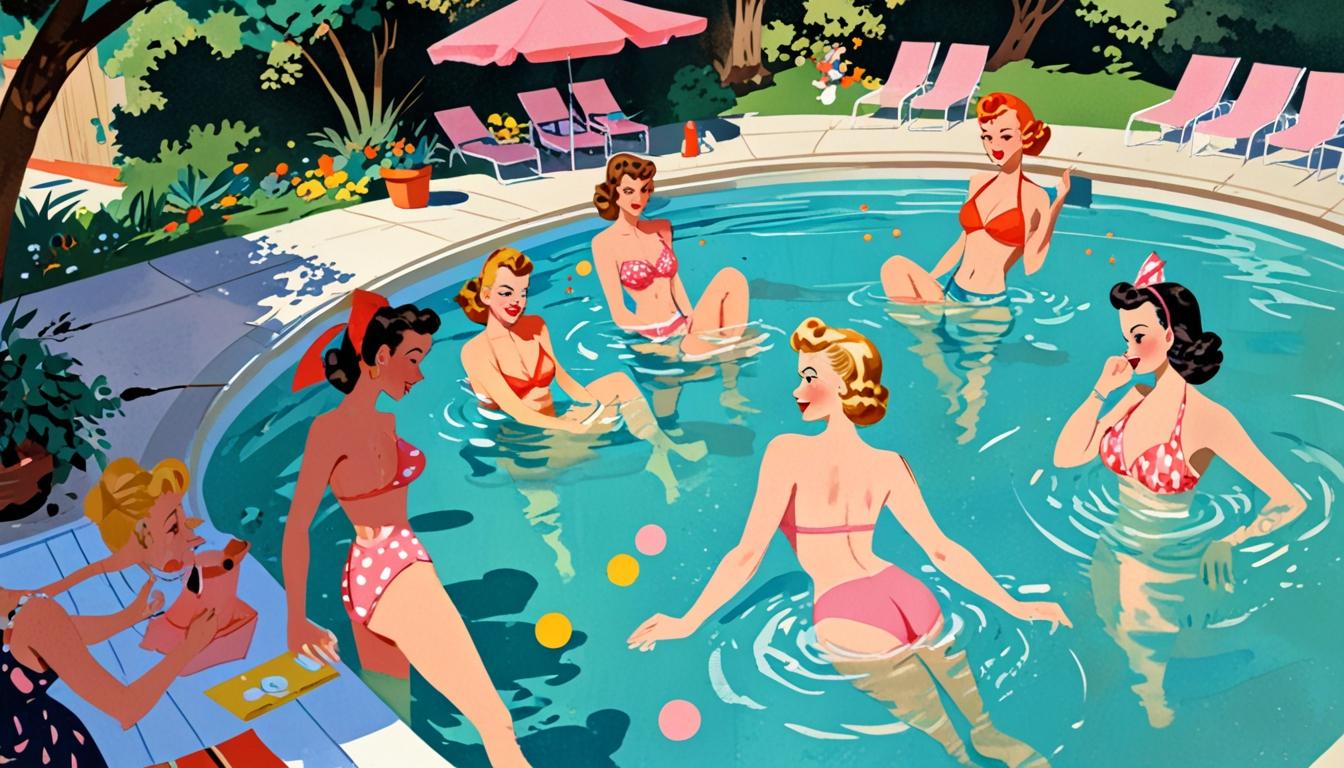The exhibit ‘Splash! A Century of Swimming and Style’ explores the bikini’s controversial inception and its role in fashion and societal changes over the decades.
Four days after the first nuclear bomb was detonated over Bikini Atoll in July 1946, fashion history took a provocative turn when French designer Louis Réard introduced the bikini at a poolside party in Paris. This two-piece swimsuit, which Réard named in homage to the nuclear explosion, represented a cultural shift aligning the world of fashion with the era’s explosive developments in science and technology.
The original bikini, now exhibited at the Design Museum in London, is a stark contrast to its contemporary perceptions. Fashion historian Amber Butchart, who is also the curator of the ongoing exhibition “Splash! A Century of Swimming and Style,” describes the first bikini as controversial for its time. The design, comprised of baggy pink triangles tied with string, marked a significant departure from swimwear that typically extended below the navel and directly aligned with the shorter swim styles popularized during the post-war excitement about the atomic age.
Prior to Réard’s unveiling, fellow French fashion designer Jacques Heim had released a similar design called the Atome, intending to capture attention with his claim of presenting “the world’s smallest bathing suit.” To compete, Réard orchestrated skywriting advertisements over the French Riviera to declare his creation even smaller.
The bikini not only invited intrigue but also faced criticism from various sectors, including the Catholic Church, which was scandalized by the exposure of more skin. Ads promoted the bikini’s minimalism, with Réard suggesting that a true bikini must fit through a wedding ring—an extreme that foreshadowed the shrinking styles of swimwear to come.
The exhibition “Splash!” captures the evolution of swimwear over a century, integrating various themes from architectural structures near water to the rise of wild swimming. It also explores niche topics such as advancements in swimwear technology and recent trends like Mermaidcore, a cultural movement celebrating mermaids and swimming in costume.
A striking aspect of the exhibition is its focus on the peculiar intersection of swimwear and 1950s atomic history, highlighted by a juxtaposition of vintage photos of Las Vegas poolside lounging against mushroom clouds in the background. The Nevada Test Site’s proximity resulted in an unusual tourism phenomenon termed “atomic tourism,” further popularized by period cocktails and pageants celebrating the allure of atomic aesthetics, including the Miss Atomic Bomb contest.
Men’s swimwear also evolved during this time as styles became more revealing. The exhibition features a section dedicated to the rise of swim attire for gay men, coinciding with a period when homosexuality was illegal. Physique magazines of the era subtly marketed revealing swimwear, blending fitness promotion with adult content.
Technological advancements in swimwear reached a peak with the introduction of the LZR Racer suit, developed by Speedo in collaboration with scientists from NASA in 2008. This suit, designed to reduce drag and enhance buoyancy, helped athletes shatter numerous Olympic records. However, its design prompted FINA, the international swimming federation, to consider it a form of “technical doping,” resulting in its subsequent ban.
As swimwear design continues to evolve, the exhibition reveals contemporary innovations aimed at inclusivity. Designers like Beefcake are creating unisex swimsuits inspired by styles from the 1920s, catering to diverse body types, while Rebirth Garments offers trans-friendly swimwear. The Blob swimsuit, a piece intended to spark dialogue about menstruation, represents a growing trend of swimwear that integrates societal issues into design.
Additional highlights from the exhibition include an iconic swimsuit worn by Pamela Anderson on the show Baywatch, and an exploration of how swimming gear, such as goggles and pool slides, has transformed over the decades.
The emergence of the mermaiding trend, especially amplified by recent media adaptations, features prominently in the display. Mermaid academies have sprouted globally, embracing a playful yet physically challenging activity as participants don elaborate tails that evoke mermaids.
The “Splash! A Century of Swimming and Style” exhibition offers a comprehensive look at the interplay between fashion and swimming culture, charting how swimwear reflects broader social changes and technological advancements over the past century.
Source: Noah Wire Services




